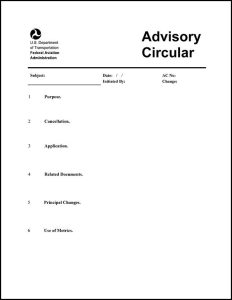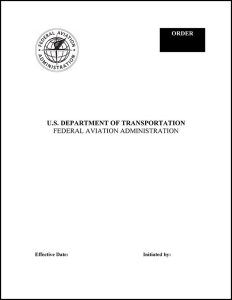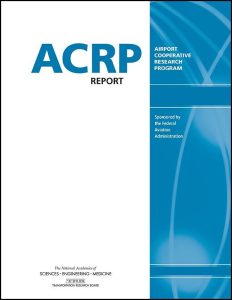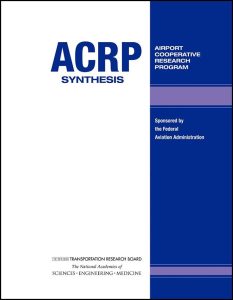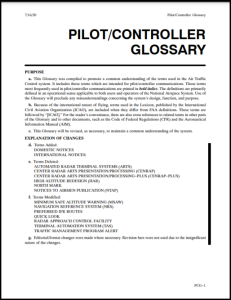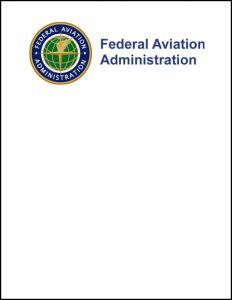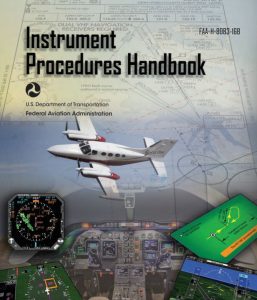To narrow the library of airside resources, use the filter boxes or airport map below or search box above.
Click an item below to expand.
Resources Matching Your Search
2021
This resource is a webpage that provides information on the Electronic Code of Federal Regulations (e-CFR) Title 49, Subtitle B, Chapter XII, Subchapter C, Part 1540, which applies to persons engaged in aviation-related activities, including holders of TSA-approved security programs.
2021
This resource is a webpage that provides information on the Electronic Code of Federal Regulations (e-CFR) Title 49, Subtitle B, Chapter XII, Subchapter C, Part 1544, which prescribes the rules governing the operations of aircraft operators holding operating certificates under 14 CFR part 119 for scheduled passenger operations, public charter passenger operations, private charter passenger operations; the operations of aircraft operators holding operating certificates under 14 CFR part 119 operating aircraft with a maximum certificated takeoff weight of 12,500 pounds or more; and other aircraft operators adopting and obtaining approval of an aircraft operator security program. Security for cargo operations is governed by this regulation.
2021
This resource is a webpage that provides information on the Electronic Code of Federal Regulations (e-CFR) Title 49, Subtitle B, Chapter XII, Subchapter C, Part 1550, which applies to the operation of aircraft for which there are no security requirements in other parts of this subchapter.
2006
This advisory circular (AC) provides basic information pertaining to the FAA's recommendations on commercial minimum standards and related policies. Although minimum standards are optional, the FAA highly recommends their use and implementation as a means to minimize the potential for violations of federal obligations at federally obligated airports.
2015
This advisory circular (AC) and its appendices provide guidance to airport operators about developing training programs for safe ground vehicle operations, personnel taxiing or towing an aircraft, and pedestrian control on the movement and safety areas of an airport. This version represents a major rewrite.
2019
This order prescribes air traffic control procedures and phraseology for use by persons providing air traffic control services. Controllers are required to be familiar with the provisions of this order that pertain to their operational responsibilities and to exercise their best judgment if they encounter situations that are not covered by it. Section 7 addresses parachute operations.
2016
This advisory circular (AC) provides guidance on using the NOTAM system for reporting airport facilities changes or outages and for using the Runway Condition Assessment Matrix for airport condition reporting. This AC prescribes procedures used to describe, format, and disseminate information on unanticipated or temporary changes to components of, or hazards in, the National Airspace System (NAS). The NOTAM system is not intended to be used to advertise data already published or charted.
2019
This advisory circular (AC) calls attention to regulatory requirements, recommended operations, and communications procedures for operating at an airport without a control tower or an airport with a control tower that operates only part time. It recommends traffic patterns, communications phraseology, and operational procedures for use by aircraft, lighter-than-air aircraft, gliders, parachutes, rotorcraft, and ultralight vehicles. This AC stresses safety as the primary objective in these operations. This AC is related to the right-of-way rules under Title 14 of the Code of Federal Regulations (14 CFR) Part 1, § 1.1 (traffic pattern), and Part 91, §§ 91.113 and 91.126.
2013
ACRP Report 86 explores a protocol for evaluating and optimizing aircraft departure procedures in terms of noise exposure, emissions, and fuel burn. An accompanying CD-ROM contains a spreadsheet-based Departure Optimization Investigation Tool (DOIT) that allows users to understand and test tradeoffs among various impact measures, including noise levels, rate of fuel consumption, and emissions.
2011
ACRP Synthesis 29 addresses the current state of ground-handling practices, focusing on safety measures and training. Issues addressed in the report include ramp safety operations, staff roles and responsibilities, safety training, audit and inspection programs, safety violation programs, and collaborative safety initiatives, such as foreign object debris programs.
2020
This advisory circular (AC) describes the standards and provides guidance in the development of a surface movement guidance and control system (SMGCS) plan for U.S. airports, in which scheduled air carriers are authorized to conduct operations when the visibility is less than 1,200 feet runway visual range (RVR). An SMGCS plan facilitates the safe movement of aircraft and vehicles on the airport by establishing more rigorous control procedures and requiring enhanced visual aids.
2020
This glossary was compiled to promote a common understanding of the terms used in the air traffic control system. It includes terms that are intended for pilot/controller communications. Those terms most frequently used in pilot/controller communications are printed in bold italics. The definitions are primarily defined in an operational sense, applicable to users and operators of the National Airspace System. The use of the glossary will preclude any misunderstandings concerning the system's design, function, and purpose.
2016
ACRP Synthesis 74 documents practices in safely accommodating mixed-use aeronautical activity at airports. Mixed-use aeronautical activity refers to the different categories of aircraft a public-use airport is intended to accommodate in compliance with FAA sponsor assurances. These categories include gliders, helicopters, ultralight vehicles, balloons, airships, blimps, skydiving, aerial applications for agriculture and firefighting, banner towing, aerobatic practice, and similar flight operations.
2008
Safety Advisor No. 2 addresses two kinds of airports: those with operating control towers and those without. When a part-time tower is closed, the airport is considered non-towered. Every year, there are more than 40 million arrivals and departures at FAA air traffic control (ATC)-towered airports. Nearly half of these are general aviation operations. Although it's possible for a pilot to avoid towered airports, doing so impacts the flexibility and utility of flying. Two things distinguish a towered airport. One is the presence of air traffic controllers, whose primary function is to coordinate traffic flow and prevent collisions. The second is that a pilot must maintain two-way radio contact with ATC and obtain clearances to land, taxi, and takeoff. Because ATC coordinates traffic at towered airports, pilots generally follow different procedures than at non-towered fields.
2008
Safety Advisor 3 addresses the operational procedures and fundamentals that pilots should be aware of when flying into a non-towered airport.
2020
This advisory circular (AC) describes acceptable methods and guidelines for developing takeoff and initial climbout airport obstacle analyses and in-flight procedures to comply with the intent of the regulatory requirements of Title 14 of the Code of Federal Regulations (14 CFR) Part 121, §§ 121.177 and 121.189; Part 135, §§ 135.367, 135.379, and 135.398; and other associated one-engine-inoperative (OEI) requirements relating to turbine engine-powered airplanes operated under parts 121 and 135. The methods and guidelines presented in this AC are neither mandatory nor the only acceptable methods for ensuring compliance with the regulatory sections. Operators may use other methods, if those methods are shown to provide the necessary level of safety and are acceptable to the FAA. This AC need not serve as the sole basis for determining whether an obstacle analysis program meets the intent of the regulations. However, the methods and guidelines described in this AC have been derived from extensive FAA and industry experience and are considered acceptable to the FAA when appropriately used.
2012
This order provides a policy to standardize low-visibility operations/surface movement guidance and control system (LVO/SMGCS) operations at Title 14 of the Code of Federal Regulations (14 CFR) Part 139 U.S. airports.
2020
This manual is designed to provide the aviation community with basic flight information and air traffic control procedures for use in the National Airspace System (NAS) of the United States. This manual contains the fundamentals required to fly in the NAS. It also contains items of interest to pilots concerning health and medical facts, factors affecting flight safety, a pilot/controller glossary of terms used in the air traffic control (ATC) system and information on safety, accident, and hazard reporting.
2017
This handbook is designed as a technical reference for all pilots who operate under instrument flight rules (IFR) in the national airspace system (NAS). Instrument flight instructors, instrument pilots, and instrument students will find this handbook to be a valuable resource because it is used as a reference for the airline transport pilot and instrument knowledge tests. It also provides detailed coverage of instrument charts and procedures, including IFR takeoff, departure, en route, arrival, approach, and landing. Safety information covering relevant subjects such as runway incursion, land and hold short operations, controlled flight into terrain, and human factors issues also are included.
2014
ACRP Report 114 examines the issues involved in through-the-fence operations. This guidebook will help airport operators who have through-the-fence operations at their airports as well as those who are evaluating through-the-fence activities for their airports. The guidebook has many worksheets and tools to help in that evaluation and for structuring and managing through-the-fence operations. A discussion on grant assurances will help those at federally obligated airports understand their responsibilities.

